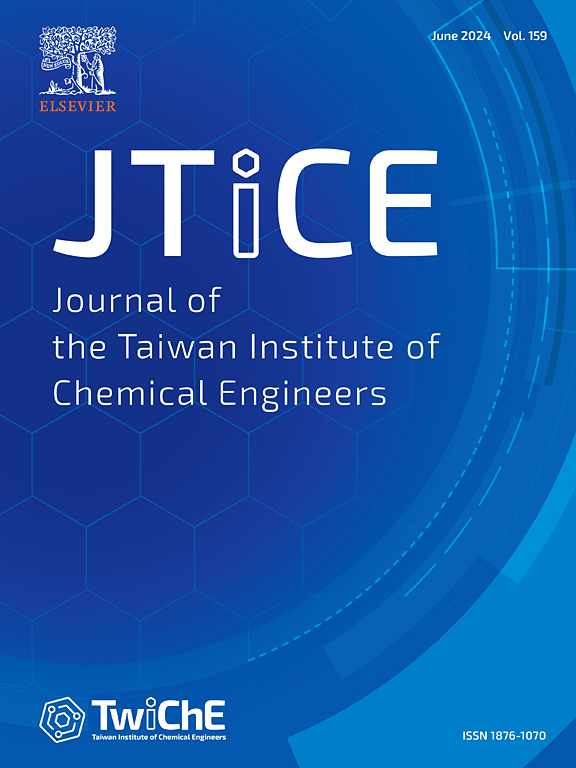Treatment of food processing industries wastewaters using a new clay-based inorganic membrane: Performance evaluation and fouling analysis
IF 5.5
3区 工程技术
Q1 ENGINEERING, CHEMICAL
Journal of the Taiwan Institute of Chemical Engineers
Pub Date : 2025-01-01
DOI:10.1016/j.jtice.2024.105439
引用次数: 0
Abstract
Background
Ceramic membranes are intensely extending their applicability in wastewater treatment due to their excellent resistance to corrosive environment, anti-fouling nature, and longer lifetime. To further widen the usage of ceramic membranes despite of their high cost, development of inexpensive ceramic membranes is highly anticipated.
Method
A novel inexpensive Fuller's earth clay ceramic membrane's performance was evaluated in treating the wastewater obtained from two food processing industries, namely the dairy industry and palm oil industry, by varying the applied pressure from 0.35 – 2 bar. Furthermore, the fouling mechanism concerning the microfiltration of wastewater was identified with the help of Hermia's pore blocking models.
Significant Findings
The prepared novel Fuller's earth clay ceramic membrane significantly reduced COD content below the permissible discharge limit (< 200 mg/L) for dairy and palm oil industry wastewaters at a pressure of 0.35 bar. Notably, 98 – 99 % removal of turbidity and suspended solids was achieved. Also, the total phosphorus content was brought down below the permissible discharge limit of 5 mg/L. From fouling analysis, it was inferred that the cake filtration model appropriately fits the obtained experimental results, confirming the anti-fouling nature of the fabricated clay membrane in treating food process industries' wastewater.

使用新型粘土基无机膜处理食品加工业废水:性能评估和污垢分析
[显示省略]
本文章由计算机程序翻译,如有差异,请以英文原文为准。
求助全文
约1分钟内获得全文
求助全文
来源期刊
CiteScore
9.10
自引率
14.00%
发文量
362
审稿时长
35 days
期刊介绍:
Journal of the Taiwan Institute of Chemical Engineers (formerly known as Journal of the Chinese Institute of Chemical Engineers) publishes original works, from fundamental principles to practical applications, in the broad field of chemical engineering with special focus on three aspects: Chemical and Biomolecular Science and Technology, Energy and Environmental Science and Technology, and Materials Science and Technology. Authors should choose for their manuscript an appropriate aspect section and a few related classifications when submitting to the journal online.

 求助内容:
求助内容: 应助结果提醒方式:
应助结果提醒方式:


